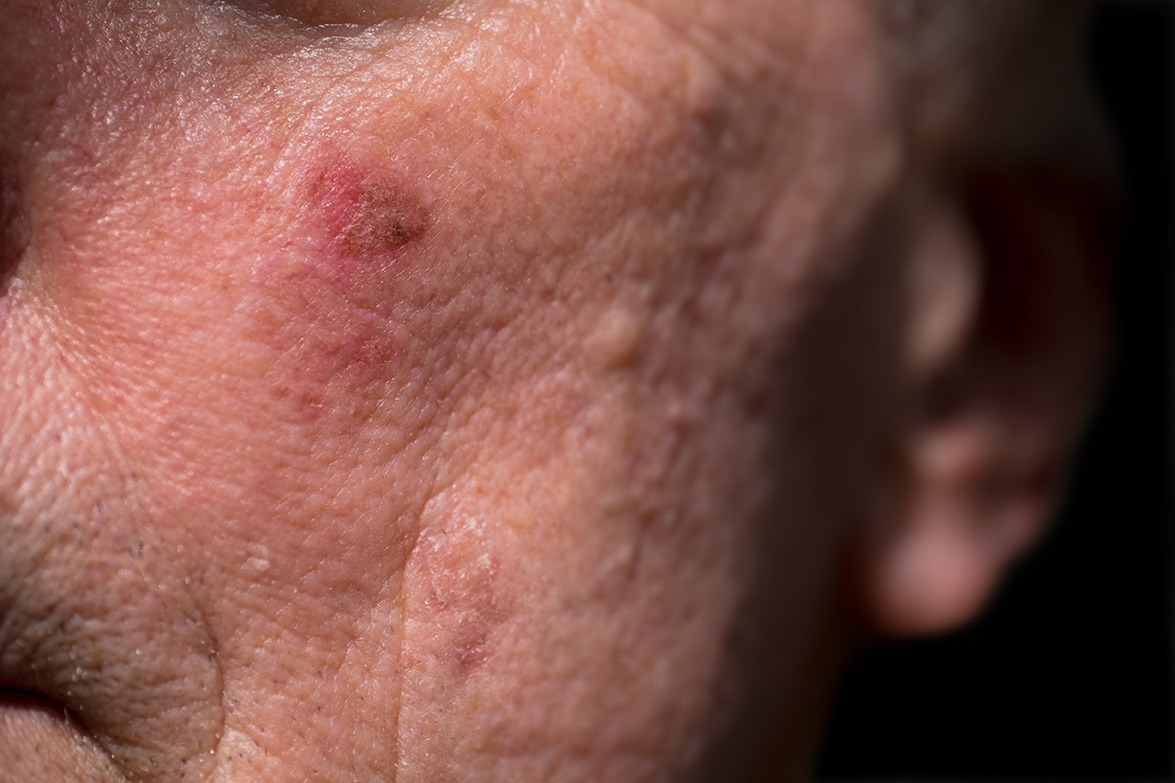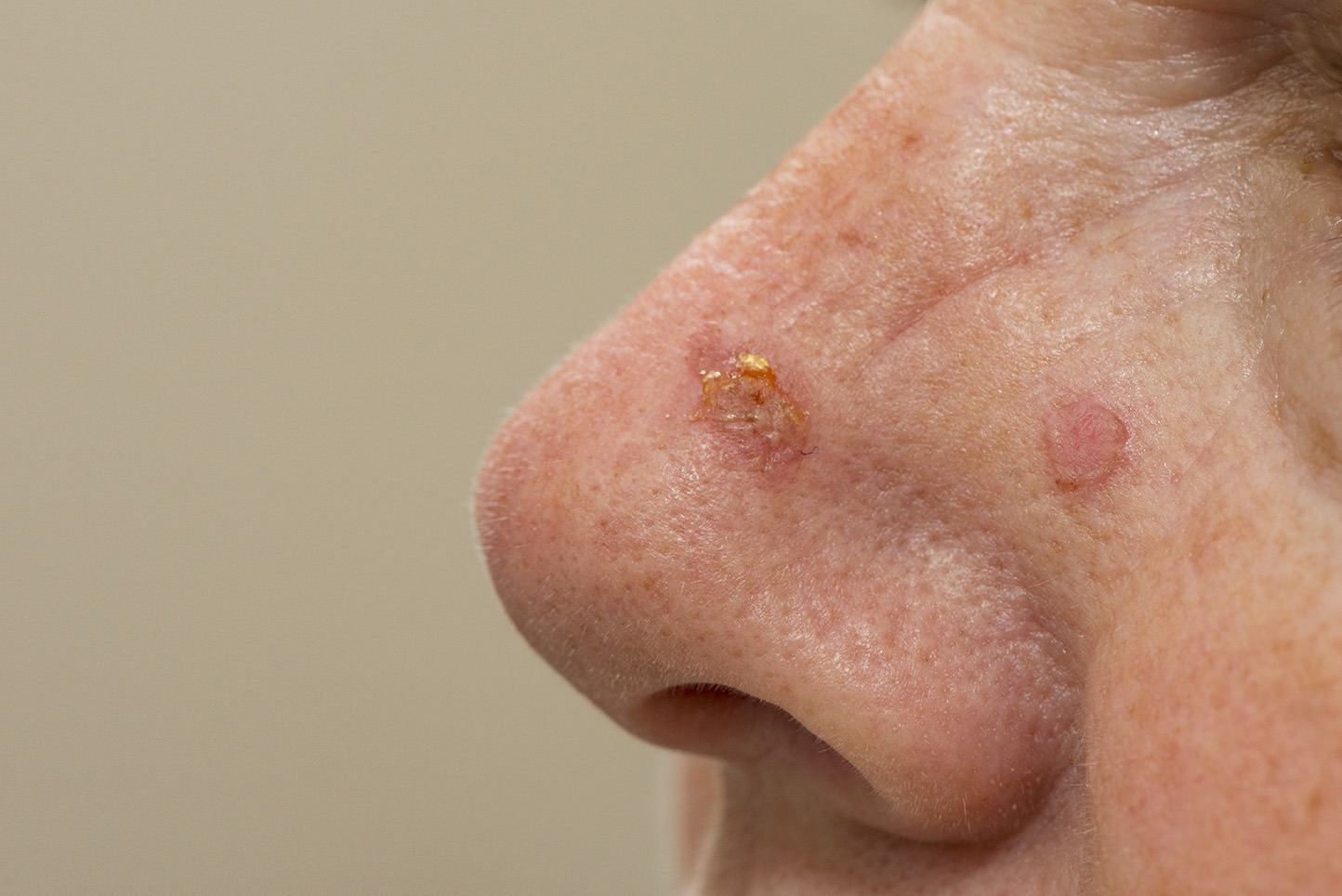Cryosurgery for Skin Lesions
Schedule an ConsultationWhat is Cryosurgery?
Cryosurgery is a minimally invasive dermatologic procedure that uses liquid nitrogen to freeze and destroy abnormal or damaged skin cells. The extreme cold causes controlled injury to the target tissue, leading it to blister and eventually slough off as the skin heals.
Because it’s quick, safe, and requires no stitches or anesthesia, cryosurgery is a preferred in-office treatment for many benign and pre-cancerous skin lesions. Most procedures take only a few minutes and allow you to return to normal activities the same day.
Conditions Treated with Cryosurgery
Cryosurgery is used to treat a variety of common skin conditions that respond well to cold therapy. These include:
- Actinic keratoses: Precancerous rough patches caused by sun damage
- Seborrheic keratoses: Benign, waxy, “stuck-on” appearing growths
- Warts: Viral lesions, especially on the hands, feet, or face
- Skin tags: Soft, flesh-colored growths typically found on the neck or underarms
- Molluscum contagiosum: Viral bumps, especially common in children
- Lentigines: Also called age spots or sun spots
- Select basal or squamous cell carcinomas: In very specific cases where the lesion is superficial and well-defined
How Cryosurgery Works
Cryosurgery is a simple in-office procedure that follows a straightforward series of steps:
- Evaluation & Diagnosis: Your dermatologist examines the lesion to confirm it’s appropriate for cryotherapy
- Freezing Application: Liquid nitrogen is applied directly using a targeted spray or a cotton-tipped applicator
- Tissue Destruction: The extreme cold damages the cells, triggering a localized healing response
- Post-Treatment Reaction: The treated area may blister or scab, and the lesion typically falls off within 1 to 3 weeks
 What to Expect During & After the Procedure
What to Expect During & After the Procedure
Cryosurgery is well-tolerated and involves minimal disruption to your daily routine. Here’s what to expect before, during, and after your visit:
- Most people feel a brief stinging or burning sensation during the freezing process
- Anesthesia is typically not required
- Redness, swelling, or blistering can develop within 24 hours
- Healing usually takes 7 to 14 days, depending on the size and location of the lesion
- Temporary pigment changes (lightening or darkening) may occur, especially in darker skin tones
- No stitches are needed, and you can typically return to work or school the same day
Benefits of Cryosurgery
Cryosurgery is a trusted dermatologic treatment that combines convenience, safety, and results. Benefits include:
- Quick, in-office treatment—usually under 5 minutes
- Non-invasive and no surgical cutting
- Minimal discomfort and downtime
- Appropriate for both children and adults
- Cost-effective for treating common lesions
- Low risk of scarring in most cases
 Is Cryosurgery Right for You?
Is Cryosurgery Right for You?
Cryosurgery is best suited for patients with benign, pre-cancerous, or small superficial skin lesions. It’s particularly effective for well-defined lesions in areas of the body that tend to heal well, such as the arms, legs, and trunk.
However, it may not be the right choice for:
- Lesions that are unusually large, deep, or have unclear borders
- Areas where precision is essential for cosmetic reasons (e.g., the face)
- Lesions that require a biopsy to confirm the diagnosis
Before treatment, your provider will perform a thorough skin examination to determine whether cryosurgery is safe and appropriate or if another approach would be more effective.
Risks and Side Effects
Cryosurgery is generally low-risk, but side effects can occasionally occur. These are usually minor and temporary:
- Redness, swelling, or blistering at the treatment site
- Mild pain, stinging, or tingling in the hours following treatment
- Hypopigmentation or hyperpigmentation, which is the lightening or darkening of the skin, particularly in those with darker complexions
- Rare chance of infection or incomplete removal, which may require additional treatment
Proper wound care and sun protection can help reduce these risks and support optimal healing.
Frequently Asked Questions
Mohs surgery is generally well tolerated. The treatment area is numbed using local anesthesia, so you’ll remain comfortable throughout the procedure. Afterward, mild soreness or tenderness is normal and typically manageable with over-the-counter pain relievers.
Initial healing usually occurs within 1–2 weeks, depending on the size and location of the surgical site. Complete scar maturation may take a few months, with continued improvement in appearance and texture over time.
Some degree of scarring is expected with any surgical procedure. However, Mohs surgery minimizes tissue removal, and we use advanced closure techniques to promote healing, reduce visibility, and support an excellent cosmetic outcome.
In select cases, Mohs surgery may be appropriate for early-stage melanomas like melanoma in situ or lentigo maligna. Your dermatologist will evaluate your pathology to determine whether Mohs is the best approach for your diagnosis.
For many non-melanoma skin cancers, Mohs offers a significantly higher cure rate and spares more healthy tissue. It’s especially beneficial for tumors in areas where preserving appearance and function is a top priority.
Schedule Your Mohs Consultation Today
A skin cancer diagnosis can feel overwhelming, but you don’t have to navigate it alone. Mohs micrographic surgery offers a safe, effective, and highly precise treatment option for many patients.
Let’s take the next step. Schedule your Mohs consultation today to receive a personalized evaluation and care plan built around your diagnosis.
